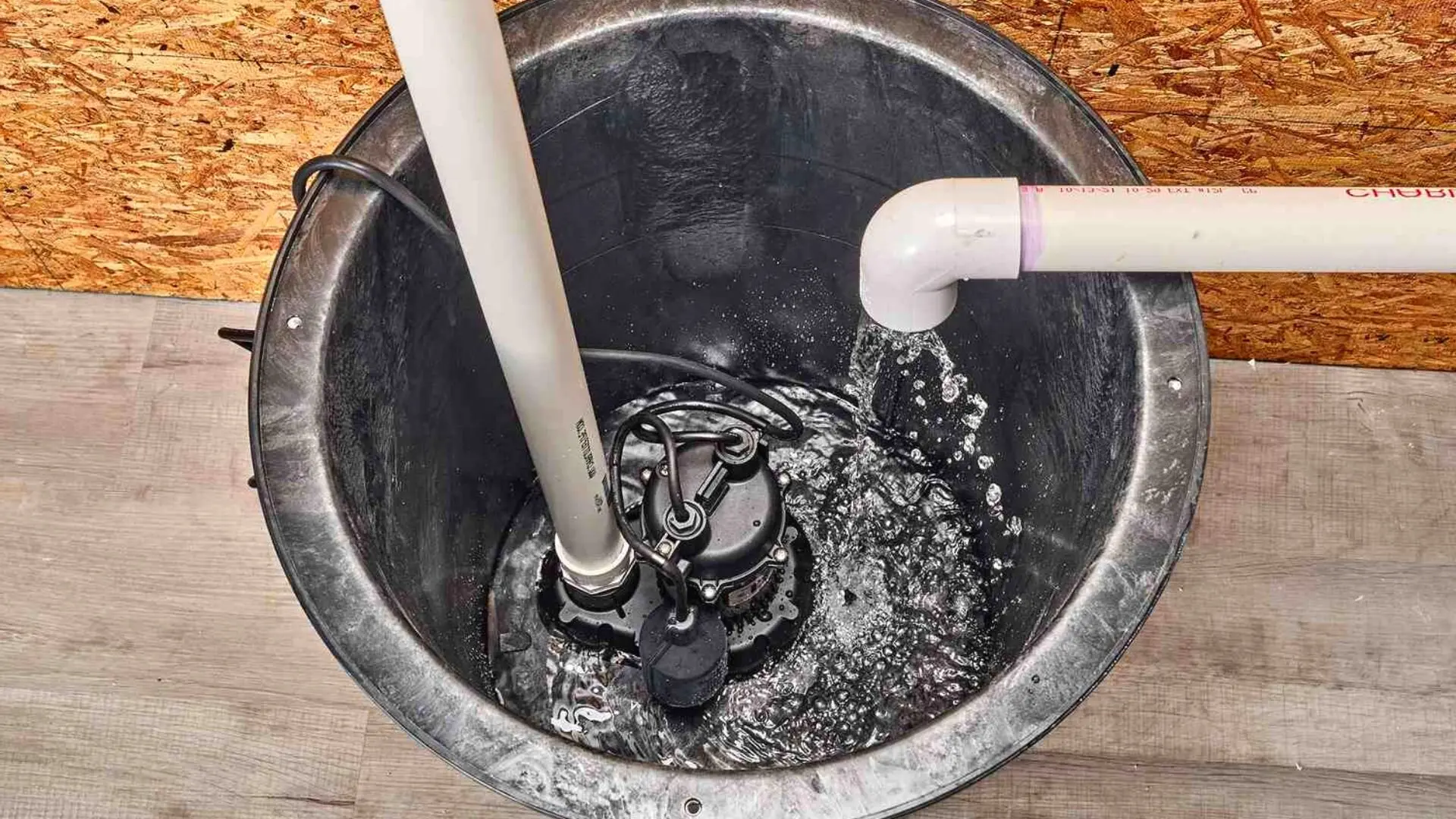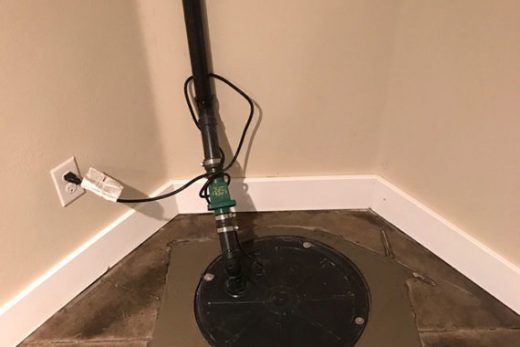Easy-to-Follow Instructions for Cleaning a Sump Pump
Easy-to-Follow Instructions for Cleaning a Sump Pump
Blog Article
We've discovered this article pertaining to Keep Your Sump Pump Clean, It'll Keep You Dry directly below on the internet and believe it made perfect sense to share it with you on this page.

Sump pumps are important components in lots of homes, specifically in locations vulnerable to flooding or excessive dampness. They aid prevent water damages by successfully getting rid of excess water from cellars or crawl spaces. Nonetheless, like any other home appliance, sump pumps need routine maintenance to ensure they work effectively when required the most. Cleansing your sump pump is a vital part of its maintenance, and comprehending how to do it properly can save you from costly repairs and potential calamities.
Introduction
Keeping a tidy sump pump is important for its proper functioning and longevity. Overlooking this essential task can cause obstructions, breakdowns, and inevitably, water damage to your building. Therefore, finding out how to cleanse a sump pump is crucial for house owners that depend on these gadgets to maintain their basements completely dry and safeguarded.
Understanding the Sump Pump
Before diving right into the cleansing process, it's necessary to have a basic understanding of just how a sump pump functions. Normally mounted in a pit or container listed below the basement flooring, a sump pump consists of several key parts, including a pump, a float button, and a discharge pipe. When water gathers in the pit, the float switch activates the pump, which after that pumps the water out with the discharge pipeline, far from the building's structure.
Signs of a Dirty Sump Pump
Recognizing when your sump pump requires cleansing is critical for stopping potential malfunctions. Some common indications that indicate a filthy sump pump consist of odd sounds during procedure, reduced water flow, and noticeable debris in the pit. If you discover any one of these symptoms, it's vital to cleanse your sump pump immediately to avoid any additional concerns.
Getting ready for Cleaning
Prior to you begin cleaning your sump pump, it's vital to take some safety and security preventative measures. Beginning by shutting off the power to the pump to stay clear of any electric accidents. Furthermore, use appropriate safety equipment, such as handwear covers and goggles, to secure yourself from dust, particles, and prospective virus.
Step-by-step Overview to Cleansing a Sump Pump
Shutting Off the Power
Begin by separating the power supply to the sump pump to prevent any kind of accidents while cleansing.
Removing Particles and Dirt
Use a pail or a scoop to get rid of any visible particles, dirt, or sediment from the sump pit. Dispose of the debris effectively to avoid it from clogging the pump or the discharge pipe.
Cleaning the Pump and Drift Switch Over
Once the pit is free from particles, carefully get rid of the pump from the pit. Check the pump and the float button for any signs of damage or wear. Make use of a soft brush or towel to clean the surfaces and get rid of any kind of built up gunk.
Flushing the System
After cleaning up the pump and float switch, purge the sump pit with clean water to get rid of any type of continuing to be dust or sediment. This will aid guarantee that the pump operates efficiently and efficiently.
Checking for Correct Functioning
Prior to re-installing the pump, do a fast test to ensure that the float button activates the pump properly. Pour some water right into the sump pit and observe the pump's procedure. If every little thing is operating correctly, you can rebuild the pump and reconnect the power supply.
Maintenance Tips to Keep Your Sump Pump Clean
In addition to periodic cleansing, there are numerous maintenance suggestions you can comply with to maintain your sump pump in optimal condition:
Verdict
Cleaning your sump pump is a critical aspect of its upkeep and makes certain that it runs properly when you require it the most. By complying with the actions described in this overview and incorporating regular maintenance into your routine, you can extend the life-span of your sump pump and protect your home from water damage.
6 STEPS ON HOW TO CLEAN A SUMP PUMP PROPERLY
UNDERSTANDING SUMP PUMPS
Your sump pump plays a crucial role in protecting your home by managing and removing excess water. It primarily functions as a “shield”, guarding your basement against the damaging effects of water accumulation. The pump is housed in a sump pit in the lowest part of your basement, and its job is to pump out any water that collects there.
During heavy rainfalls or when snow melts rapidly, water can infiltrate your basement, posing potential risks like flooding, structural damage, and harmful mold growth. Here, the sump pump springs into action, pumping out the intruding water and directing it away from your home.
SAFETY FIRST
Before cleaning, remember to prioritize safety. Disconnect the sump pump from the power source to prevent any accidental electric shocks. Also, wear sturdy gloves to protect your hands from any sharp or dirty components within the pump.
REMOVE THE SUMP PUMP
After ensuring your safety, the next step is to remove the sump pump from its pit. Doing this might require careful maneuvering as you don’t want to damage any pump components. Once removed, clean the sump pit to remove any accumulated debris or sludge.
INSPECT THE PUMP
Inspect the pump for any visible signs of wear or damage. Check the power cord, float switch, and impeller housing. If any components look worn out or damaged, consider replacing them to ensure optimal performance.
CLEAN THE PUMP
Thoroughly clean the pump with warm, soapy water. Make sure to rid it of any dirt, gravel, or other debris that might impede its performance. You can use a toothbrush to clean the small, hard-to-reach parts of the pump.
REINSTALL THE SUMP PUMP
Reinstall the pump into the sump pit Make sure it’s positioned correctly to remove the water effectively Once it’s back in place, reconnect it to the power source TEST THE PUMP
Finally, pour some water into the pit to ensure the pump works correctly. It should start automatically and begin pumping out the water; if it doesn’t, check the power source and the positioning of the pump.
Remember, while cleaning your sump pump is an essential part of home maintenance, hiring a professional plumber for a thorough inspection and cleaning at least once a year is also important. This will ensure that your pump is in optimal condition, ready to protect your home from potential water damage.
BEST PRACTICES FOR CLEANING SUMP PUMP DISCHARGE PIPES
Regular Inspection: Regularly inspect your discharge pipes, especially during heavy rainfall or snowmelt periods. Look for any signs of blockage or damage. Early detection of problems can prevent serious issues down the line. Periodic Cleaning: Over time, sediment and debris can accumulate in the discharge pipes, impeding the flow of water. Regular cleaning helps keep the pipes clear and functioning efficiently. You can use a high-pressure water jet to effectively clean the pipes. Insulation During Winter: In colder climates, discharge pipes can freeze, blocking the outflow of water. Protect your discharge pipes from freezing temperatures by insulating them with foam pipe insulation. This will ensure the sump pump can continue to discharge water even in freezing conditions. Proper Positioning: The discharge pipe should be positioned to direct water away from your home’s foundation. Improper positioning can lead to water seeping back into the basement. Ensure the pipe is long enough and angled correctly. Installation of a Check Valve: A check valve prevents water from flowing back into your sump pit after the pump has pushed it out. Installing a check valve helps maintain the efficiency of your sump pump and reduces the risk of flooding. Minimize Pipe Turns: Every curve or turn in the discharge pipe can decrease the efficiency of water flow. By minimizing turns and bends in your discharge pipe, you can increase the efficiency of your sump pump. https://www.fullspeedplumbing.com/how-to-clean-a-sump-pump-properly9999/

Do you really like more info about ? Place a remark down below. We would be happy to listen to your views about this blog entry. Hoping to see you back again soon. Do you know someone else who is curious about the niche? Feel free to share it. Many thanks for your time. Please come by our blog back soon.
Need Help? Hire Us Now! Report this page